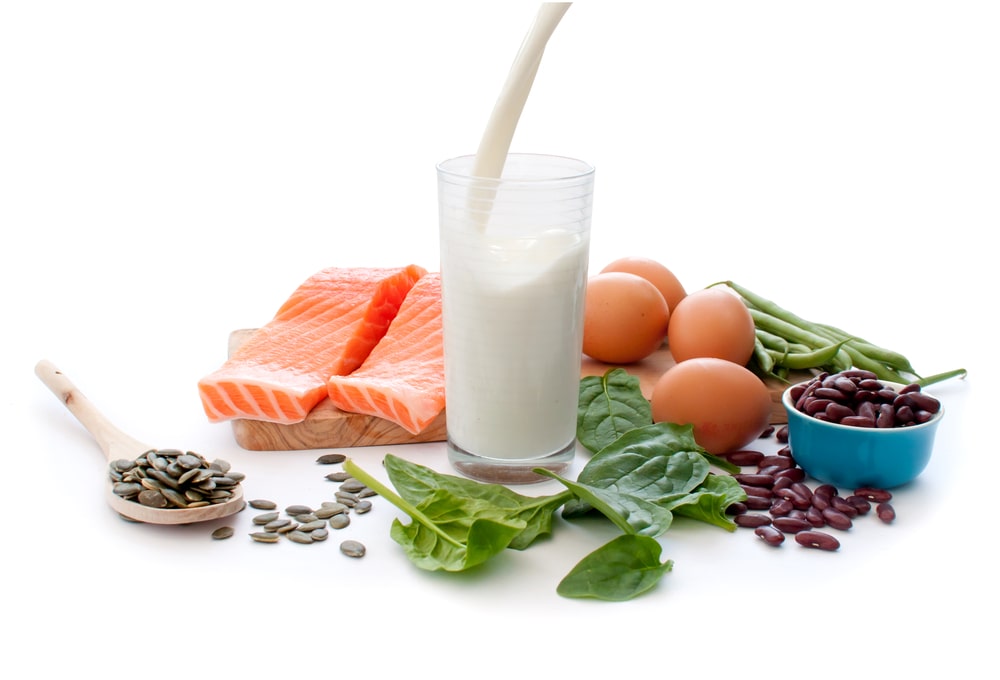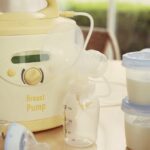Not having enough fat in breastmilk is a common concern and for good reason.
When your baby doesn’t get the fat that they need, they don’t gain enough weight. This can have adverse effects on their health. If your baby isn’t gaining enough weight, there are things that you can do to help the situation, though.
How To Increase The Fat In Your Breastmilk
Thankfully, there are quite a few ways that you can do this. You can look at everything from the time of day to your diet and more to determine where you can make adjustments. Follow as many tips on this list as possible to make your breastmilk fattier.
1. Make Sure Your Baby Eats The Hindmilk
The milk in the front of the breast is important. It is full of important vitamins and nutrients that your baby needs. However, this often means that babies don’t get the hindmilk. Foremilk has more water while hindmilk has a higher fat content.
Common breastfeeding tips, such as leaving the baby on one breast for fifteen minutes and then the other for fifteen minutes means that the baby primarily drinks the foremilk, which doesn’t have as much fat.
You can pump your breast before feeding your baby to make sure that they are drinking the hindmilk first. If your baby is still hungry, you can then feed them the foremilk out of a bottle.
Another great idea is to pump the hindmilk if your baby doesn’t completely empty your breasts with each feeding. Then, you can feed your baby that milk through a bottle. Both ways your baby will get more of the fat that they need.
2. Don’t Let Your Breasts Fill Up
When your breasts are full of milk, the fattier breastmilk stays in the back of the breast. If you don’t give them enough time to fill up, then all of the milk will have a higher fat content.
You can accomplish this one of two ways. The first option is to feed your little one more often. They will eat less at each feeding, but it will be breastmilk that has a higher fat content.
While this is ideal, you can’t make your baby eat whenever you want them to eat. This can make that idea rather impossible. If you find yourself in this situation, try pumping instead.
Pumping does the same thing to the breast that a nursing infant does, and can help guarantee that your breasts never fill up completely.
View in gallery
3. Make Sure That You’re Healthy
There’s a common belief that what a mom eats affects what is in her breast milk.
It’s thought that when a mom consumes more fatty food that her breastmilk will have more fat in it. This is a myth. Consuming food that has more fat in it will not automatically give you breastmilk that has more fat in it.
However, there is one exception. When a mom is malnourished, it can affect the fat content of her breastmilk. Moms that are not healthy can increase the fat content of their breast milk by being healthier.
This applies to more severe illnesses, such as anorexia. However, not being able to eat as you normally would for an extended period of time, such as if you have the flu for a few weeks, can also impact the fat content in your breastmilk.
Make sure that you get to feeling better as soon as possible, and consider supplementing in the meantime.
4. Breast Massage In Between Feedings
In between feeding your baby, take the time to massage your breasts. This can help bring the hindmilk forward from the back of the breast. Instead of your little one primarily getting the milk in the front, they’ll get both, which is what they need.
5. Consider Taking Supplements Increasing Your Milk Supply
If you’re struggling with your milk supply, it can mean that your baby isn’t getting enough fat from your milk too. In general, a fuller breast means that there is more breastmilk with more fat in it. There are a lot of supplements on the market that can help you increase your milk supply.
6. Eat More Protein
View in gallery
What you eat won’t necessarily give you more fat in your breastmilk. However, increasing your milk supply can and eating more protein is a great way to do just that.
Try to include more lean meats and eggs in your diet to get plenty of protein. If you’re a vegetarian, consider adding protein powder to your daily routine.
7. Separate Your Milk
Consider separating your breast milk when you pump it. Pump your breast milk for about two minutes. Then, using a new container, pump the rest of your breastmilk.
You’ll notice that the two containers of milk have different consistencies when you compare them. This is because the hindmilk, which has more fat in it, is thicker than the milk in the front of the breast.
This is especially important if you pump to feed your baby. Not only should you store them separately, but you want to make sure that they are separated in the freezer too.
Instead of grabbing the one in front, make sure that you’re feeding your baby at least a full feeding of hindmilk every day. This can increase their fat intake.
8. Eat Healthier Fats
- We blended together our favorite nuts to create a healthy snack you can enjoy at any time
- Take these along on your next outing or grab a handful when you’re at work. Nature got it right
- Non GMO Project Verified
- Kosher
- No high fructose corn syrup or hydrogenated oils
Prices pulled from the Amazon Product Advertising API on:
Product prices and availability are accurate as of the date/time indicated and are subject to change. Any price and availability information displayed on [relevant Amazon Site(s), as applicable] at the time of purchase will apply to the purchase of this product.
While you might not be able to change the fat content in your breastmilk, you can change the type of fat there is in the milk.
Eating healthier fats, such as those found in nuts and fish, instead of unhealthy trans fats can help your baby consume more fat that is good for them. This fat can help them put on more weight.
In Conclusion
There is nothing you can do to increase the amount of fat in your breastmilk. These tips and tricks can help you make sure that your baby is drinking plenty of the fat that is already there though. Use as many of these as you can to help your little one gain weight.







